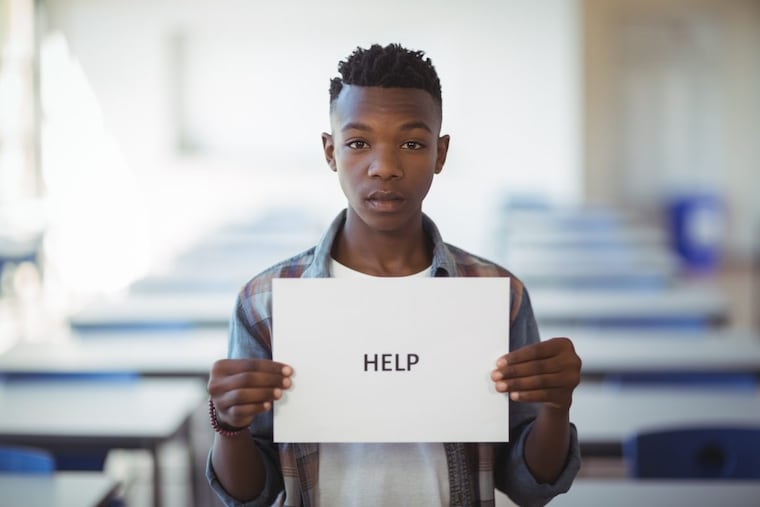If teachers are armed, black and brown kids will be the victims | Solomon Jones
America is already a deadly place for children of color. Arming teachers would increase that danger exponentially.

On Friday, when Florida's Senate reacted to a mass shooting with legislation that would pave the way for armed teachers, I thought not of safety, but of danger — especially for children of color.
The Senate bill limits which teachers could volunteer to undergo law enforcement training and carry guns in schools. Teachers who only work in classrooms would be ineligible, but those who coach or perform other duties could participate. Teachers who have worked in the military or in law enforcement could also participate in the program.
All this might create the appearance of protection for white students. But in a state where George Zimmerman escaped punishment for shooting and killing unarmed black teen Trayvon Martin, guns in classrooms are a danger to black children. In a country where a police officer can claim that 12-year-old Tamir Rice playing with a toy gun made the officer fear for his life, teachers turned cops are a threat to black children. At a time when studies show that students of color are punished more harshly than their white counterparts, educators with weapons endanger black children.
In short, America is already a deadly place for children of color. Arming teachers would increase that danger exponentially. Because in America's schools, black children already face bias, almost from the moment they step into a classroom.
A 2014 study on racial disparities by the Department of Education's Office of Civil Rights found that while black students represent 18 percent of preschool enrollment, they represent 42 percent of students suspended once and 48 percent of students suspended more than once.
As a black parent who has seen my children treated unequally by some teachers, I can tell you that the numbers represent more than a coincidence. They are the result of widespread biases that feed the unfounded belief that black and brown children are more dangerous than other children.
Those biases affect black children throughout their school careers, and study after study shows this to be true.
A 2017 report on racial disparities in school suspensions by the Brookings Institution found that in California, African American students were suspended at rates three to four times higher than the state average for all students.
But the more interesting findings came in another Brookings report on discipline disparities and discrimination in schools. Researchers looked at the punishments meted out to black and white students for the same infractions, and found that black students and poor students were often punished more harshly than their white counterparts for similar infractions. For instance, the study found that when interracial fights took place, there was a noticeable difference in the discipline faced by black students.
"Black students are systematically punished longer than white students for interracial fights," the study said. "The difference appears small in magnitude — about one additional suspension day for black students for every 20 interracial fights — but consistent and statistically significant in all models tested."
So if racial disparities in school discipline have been consistently documented for decades, arming teachers creates opportunities for those disparities to play out in lethal classroom scenarios.
In urban school districts such as Philadelphia, where race and poverty are locked in a deadly dance, I am fearful that arming teachers could be the match that lights the fire.
In too many urban districts, we see children whose emotional problems come from witnessing violence where they live. We find children who can't see the board because their parents can't afford to buy them glasses. We see children who are desperate to eat at school because there's just no food at home.
These are the real-life issues that kids face in school. So they might not sit down when a teacher asks them to do so. They might not get the lesson the first time. They might act out as a cry for help.
Combine these students with stressed-out teachers who are underpaid, overworked, and blamed for things beyond their control. Then add documented racial biases and guns to the equation, and watch the whole thing explode.
I don't want a gun to go off in a classroom filled with our children. I don't want teachers adopting the language of cops who kill black people. I don't want a teacher to tell us they killed out of fear for their life.
Black and brown children are already dying slow deaths in our schools. In districts that are underfunded and classrooms that are under resourced, they fight against biases seen and unseen.
If children of color are to win the battles they currently face, we must not ask them to face armed teachers, too.